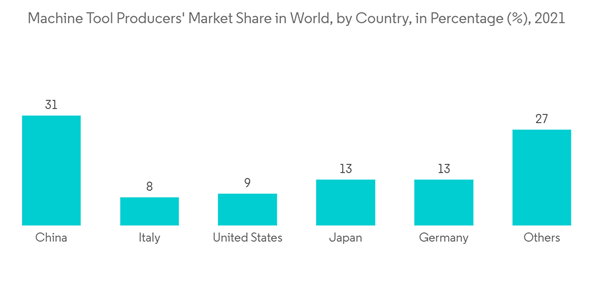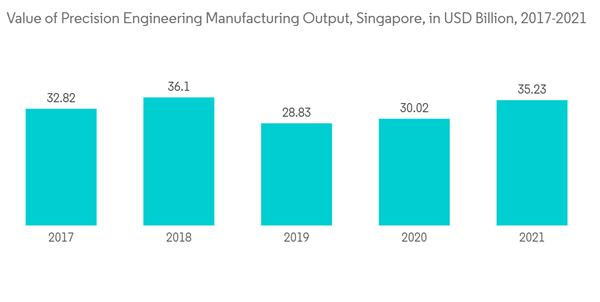Key Highlights
- Following the trade war between the United States and China, the supply chain revolution has become a major source of concern. This revolution will result in the transfer of enterprise production bases and even the entire supply system, forming several regional-based manufacturing centers. The ASEAN region has benefited from regional manufacturing. Nevertheless, unlike in the past, the ASEAN region is not based on labor outsourcing but has gradually developed into a smart manufacturing center, with Singapore leading the way.
- The Southeast Asian Manufacturing Alliance was established in 2020 by Singapore and officially launched in March 2021. Through the spirit of the alliance, it integrates manufacturers from ASEAN countries, connecting Malaysia, Vietnam, and Indonesia. Aiming at foreign large-scale and local manufacturers, it will form a close regional cooperation alliance to help manufacturers build a digital supply chain in more than 10 industrial zones and increase their market share. The benefit of SMEs implementing smart manufacturing is that it allows them to manage their daily operations more efficiently and differentiate themselves from competitors through innovative mechanisms. Obtaining real-time data from the manufacturing process for business decision-making and prediction/problem-solving is a critical component of smart manufacturing.
- China's machinery industry, which is already a global leader, is entering a new era of sophistication. According to the China Machinery Industry Federation, sales revenue for the section reached CNY 12.95 trillion (USD 1.87 trillion) in the first half, up 5.44% year on year. Strategic emerging subcategories accounted for 79.3% of total revenue and 76.64% of total profits in the machinery industry, growing 3.38% and 2.67%, respectively. In addition, the machinery company debuted its Bright-eye teaching-free robot welding technique at the 2022 WRC. It solves problems such as low automation rates, low welding rates, and poor production through ultrahigh-precision 3D vision and laser perception systems, as well as Sany's unique expert welding process database and offline programming technology.
- Precision engineering is paving the way for India to become self-sufficient. The current geopolitical challenges have highlighted the critical importance of "Atmanirbharta" in strengthening the country's digital infrastructure. The current geopolitical challenges have highlighted the critical importance of "Atmanirbharta" in strengthening the country's digital infrastructure. In FY22, India had a current account deficit (CAD) of 1.2%and India's widening current account deficit is exacerbated by a surge in crude and other imports, which has led to an in domestic inflation. As a result, striving for rapid self-sufficiency and strengthening domestic industries in core and critical segments is critical to catapult the country into a precision manufacturing and technological orbit.
APAC Precision Turned Product Manufacturing Market Trends
Growth of Precision Manufacturing Sector and allied MSMEs
Precision engineering machines have grown in popularity due to their computerized accuracy, improving manufacturing processes' productivity and efficiency. Precision engineering's scope is expanding as technological possibilities expand. Precision engineering machines enable automated operations, reducing the time required for machine components. Once the machinist enters the codes into the computer, these machines can continue operating without manual intervention or supervision. Robots, or industrial automated machines, have proven to benefit both discrete and continuous manufacturers in various ways. Among these advantages are more efficient production procedures and increased productivity.The manufacturing sector in India will be a driving force in the country's journey to self-sufficiency and economic power. National Statistical Office (NSO) estimates that the manufacturing sector currently contributes 17% of India's GDP and has a strong multiplier effect on other allied sectors. As India accelerates its growth targets, businesses in the sector are becoming more conscious of reducing unwanted losses and downtime to increase productivity and profitability. Investing in cutting-edge technology, selecting superior lubrication solutions, and ensuring regular maintenance and servicing are all critical.
Beijing has assisted global manufacturers with its meticulously built-up infrastructure and plentiful industrial supplies over the last two decades. Even in sectors where it does not dominate, the country's control over production processes grew rapidly. Countries ranging from the United States to Vietnam and Indonesia are all attempting to position themselves as alternatives. Parts of the supply chain may shift away from China, but only some countries can come close to building such a complex network of factories in such a diverse range of industries. Switching agreements and suppliers takes time, as does setting up operations that have been in place for years.
Demand of Precision Engineering Products in ASEAN Countries
Manufacturers in Singapore are actively pursuing collaboration with the city state's thriving start-up ecosystem, driving efforts to find new advanced manufacturing solutions and positioning Singapore at the forefront of the physical and digital worlds' convergence. Manufacturing accounts for 20% of the national GDP, ranking Singapore second globally in the World Economic Forum's Readiness for the Future of Production Report. To drive further growth, the government launched the Singapore Smart Industry Index. This tool allows manufacturers to assess the readiness of their facilities and develop more informed Industry 4.0 road maps across three main pillars: process, technology, and organization.SAM Engineering & Equipment (M) Bhd, which serves the precision and equipment markets, anticipates lower sales in the coming months. Given softer consumer electronics demand amid rising inflationary pressures and interest rates, its management has become cautious about the company's second half of its 2023 fiscal year (2H23), which runs from October 2022 to March 2023. Due to softer demand, the group anticipates lower equipment sales, in line with the global semiconductor industry's slowdown. This could result in lower sales of data storage equipment.
APAC Precision Turned Product Manufacturing Market Competitor Analysis
The Asia-Pacific precision turned product manufacturing market is fragmented, with the presence of a large number of local and regional players, as well as global players. Some major players include E&H Precision, Pacific Precision, Jiangsu Pacific Precision Forging Co. Ltd (PPF), APCS - Asia Precision PLC, Asia Engineering & Outsourcing Pte Ltd, and many more, including others. Technology advancement in the industry is driving the players to hold a good share of the market. At the same time, a shift of consumers towards Asia and ASEAN countries is driving the market and creating opportunities for more players in the market.Additional Benefits:
- The market estimate (ME) sheet in Excel format
- 3 months of analyst support
Table of Contents
Companies Mentioned (Partial List)
A selection of companies mentioned in this report includes, but is not limited to:
- E&H Precision
- DMG MORI
- Ningbo Sinster Machine Co. Ltd
- AMADA
- HAAS
- MAZAK
- Ningbo Sinster Machine Co. Ltd
- Star Rapid
- 3E Rapid Prototyping (3ERP)
- Junying Metal Manufacturing Co. Limited










